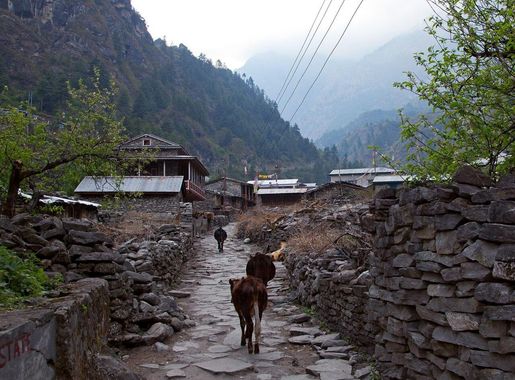
Manaslu Circuit: The Untouched Gem of Nepal
Discover the Manaslu Circuit in Nepal: An Unspoiled Trekking Trail Offering Solitude, Stunning Views, and Cultural Richness for an Unforgettable Adventure.
The Manaslu Circuit, nestled in the heart of Nepal, offers an unparalleled trekking experience for adventurers. This trail, circling the majestic Mount Manaslu, the eighth highest peak in the world, is a hidden gem waiting to be discovered by nature enthusiasts. The journey takes you through lush forests, quaint villages, and rugged terrains, all while providing breathtaking views of snow-capped peaks and glacial valleys. The circuit is less crowded compared to its more famous counterparts, making it a perfect retreat for those seeking solitude in the lap of nature. The trek spans approximately 177 kilometers and usually takes around 14 to 18 days to complete. Starting from the town of Arughat or Soti Khola, the trail winds through the Manaslu Conservation Area, home to diverse flora and fauna. Trekkers will encounter a mix of Hindu and Tibetan-style Buddhist cultures, adding a spiritual dimension to the adventure. The highlight of the trek is crossing the Larkya La Pass, standing at 5,160 meters, which offers panoramic views of the surrounding peaks. Accommodation along the Manaslu Circuit is mainly in teahouses, providing basic yet cozy lodging and meals. The teahouses are run by local families, giving trekkers a chance to experience authentic Nepali hospitality. Although the trek is challenging and requires a good level of physical fitness, the sense of accomplishment and the natural beauty encountered along the way make it a rewarding experience. The best times to embark on this trek are during the pre-monsoon (March to May) and post-monsoon (September to November) seasons, when the weather is most favorable.
Local tips in Manaslu Circuit
- Obtain the necessary permits: Manaslu Restricted Permit, Annapurna Conservation Area Permit (ACAP), and Manaslu Conservation Area Permit (MCAP).
- Travel with a licensed guide: It is mandatory for safety and navigation through restricted areas.
- Pack for varying climates: Weather can change quickly; be prepared for both warm days and cold nights.
- Acclimatization is key: Take rest days to adjust to the altitude and avoid altitude sickness.
- Carry sufficient cash: ATMs are scarce along the route; ensure you have enough Nepali Rupees for your needs.
- Respect local customs: Dress modestly and be mindful of cultural practices in villages.
- Stay hydrated: Drink plenty of water to stay hydrated, especially at higher altitudes.
Manaslu Circuit: The Untouched Gem of Nepal
The Manaslu Circuit, nestled in the heart of Nepal, offers an unparalleled trekking experience for adventurers. This trail, circling the majestic Mount Manaslu, the eighth highest peak in the world, is a hidden gem waiting to be discovered by nature enthusiasts. The journey takes you through lush forests, quaint villages, and rugged terrains, all while providing breathtaking views of snow-capped peaks and glacial valleys. The circuit is less crowded compared to its more famous counterparts, making it a perfect retreat for those seeking solitude in the lap of nature. The trek spans approximately 177 kilometers and usually takes around 14 to 18 days to complete. Starting from the town of Arughat or Soti Khola, the trail winds through the Manaslu Conservation Area, home to diverse flora and fauna. Trekkers will encounter a mix of Hindu and Tibetan-style Buddhist cultures, adding a spiritual dimension to the adventure. The highlight of the trek is crossing the Larkya La Pass, standing at 5,160 meters, which offers panoramic views of the surrounding peaks. Accommodation along the Manaslu Circuit is mainly in teahouses, providing basic yet cozy lodging and meals. The teahouses are run by local families, giving trekkers a chance to experience authentic Nepali hospitality. Although the trek is challenging and requires a good level of physical fitness, the sense of accomplishment and the natural beauty encountered along the way make it a rewarding experience. The best times to embark on this trek are during the pre-monsoon (March to May) and post-monsoon (September to November) seasons, when the weather is most favorable.
When is the best time to go to Manaslu Circuit?
Iconic landmarks you can’t miss
Annapurna Conservation Area
Explore the stunning landscapes and rich biodiversity of the Annapurna Conservation Area, a national park that offers adventure and cultural experiences in the heart of the Himalayas.
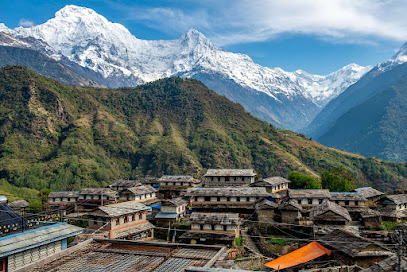
Seti River Gorge
Discover the breathtaking beauty of Seti River Gorge in Pokhara, a thrilling destination for adventure seekers and nature lovers alike.
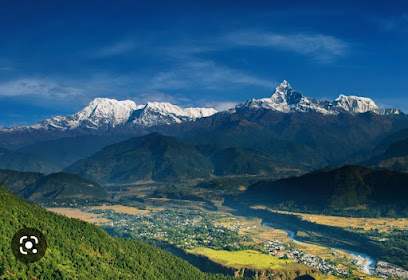
Chamere Gufa
Discover the mysterious Chamere Gufa in Pokhara, a captivating bat cave offering adventure and unique natural beauty amidst stunning landscapes.
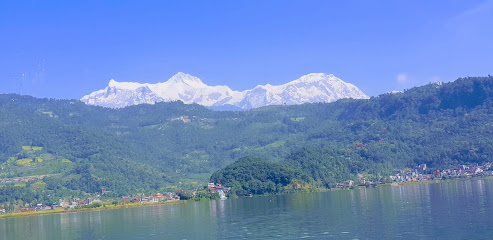
Manaslu
Experience the breathtaking beauty of Manaslu, the eighth highest peak in the world, a paradise for trekkers and adventurers in Nepal.
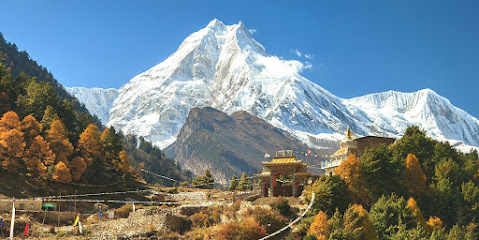
Kahunkot Viewpoint
Discover the breathtaking vistas of the Annapurna Range at Kahunkot Viewpoint, a must-visit tourist attraction in Pokhara, Nepal.
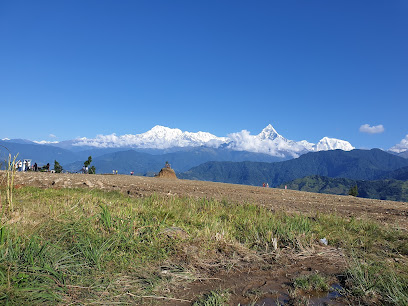
Manaslu Trekking Area
Experience the breathtaking beauty and rich culture of the Manaslu Trekking Area, a hidden gem in Nepal's majestic Himalayas.
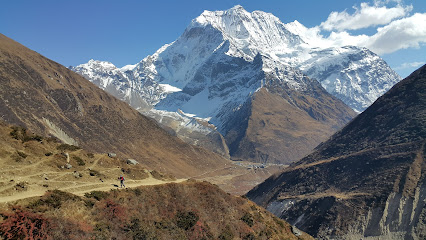
Mardi Himal Base Camp Trek
Explore the breathtaking Mardi Himal Base Camp Trek in Nepal, where stunning mountain views meet rich cultural experiences in the heart of the Annapurna region.
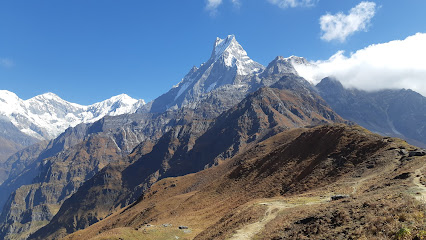
Pokhara Planetarium & Science Center (Mirror Maze House)
Discover the wonders of science and the universe at the Pokhara Planetarium & Science Center, home to an exhilarating Mirror Maze House in stunning Pokhara.
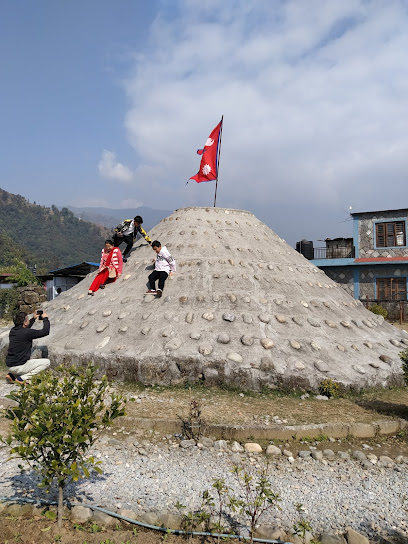
Pokhara Nepal
Explore the breathtaking beauty of Pokhara, Nepal—where serene lakes meet majestic mountains, offering adventure and tranquility for every traveler.
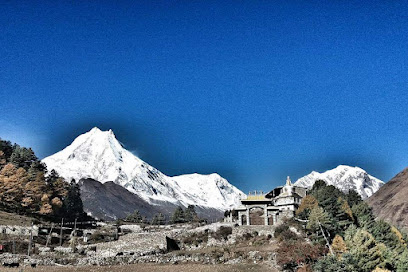
Manaslu Circuit Trekking
Discover the awe-inspiring Manaslu Circuit Trek in Nepal, a journey through stunning landscapes and rich cultural heritage, perfect for adventure seekers.
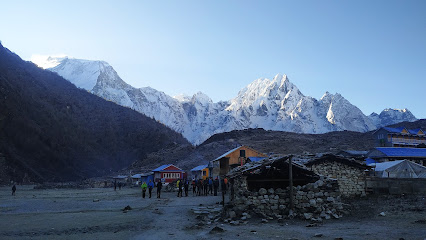
Larkya La Pass
Experience the stunning beauty and adventure of Larkya La Pass, a breathtaking mountain pass in the Himalayas, perfect for trekking enthusiasts.
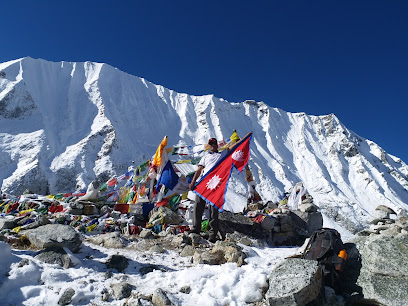
Birendra Cave
Explore the breathtaking wonders of Birendra Cave, a natural treasure in Nepal offering stunning formations and a tranquil escape into nature's beauty.
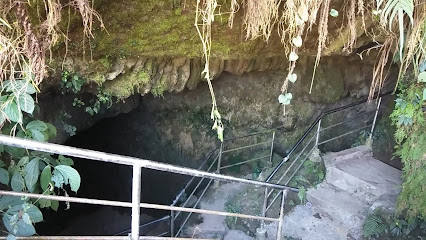
Mu Gompa
Immerse yourself in tranquility and spirituality at Mu Gompa, a stunning Buddhist temple nestled in the heart of the Himalayas in Chhokangparo.
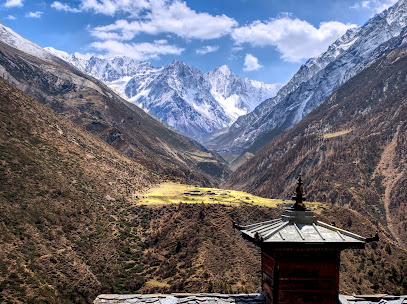
Manaslu Circuit Trek in Nepal
Experience the breathtaking beauty and rich culture of Nepal on the iconic Manaslu Circuit Trek, a journey through stunning landscapes and local traditions.
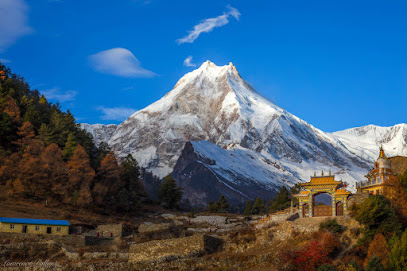
Manaslu Circuit Trekking Route
Explore the breathtaking Manaslu Circuit Trekking Route, a majestic journey through Nepal's Himalayas, rich in culture and natural beauty.
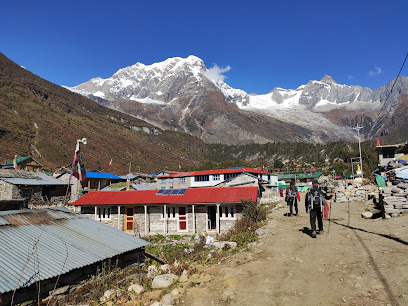
Unmissable attractions to see
Manaslu Trekking Area
Explore the breathtaking landscapes and rich culture of the Manaslu Trekking Area, a hidden gem in Nepal's majestic Himalayas.
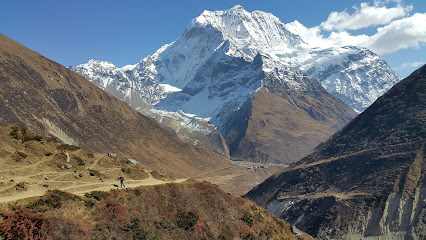
Octopus Waterfall - अक्टोपस झरना
Discover the mesmerizing beauty of Octopus Waterfall in Jagat, Nepal, a hidden gem perfect for nature lovers and photographers alike.
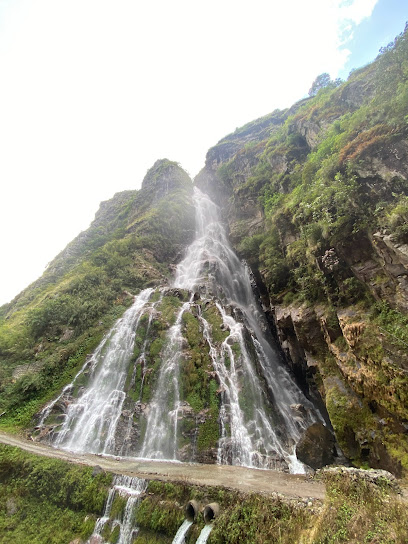
Mu Gompa
Experience the tranquility and cultural richness of Mu Gompa, a serene Buddhist temple nestled in the breathtaking landscapes of Chhokangparo, Nepal.
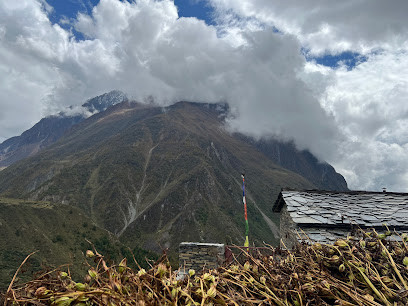
Manaslu Base Camp
Experience breathtaking views and cultural richness at Manaslu Base Camp, a premier trekking destination in the heart of the Himalayas.
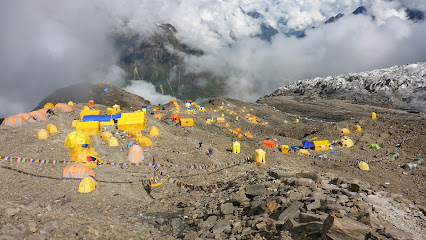
Samagaun Hiking Area
Experience breathtaking views and rich cultural heritage in the stunning Samagaun Hiking Area of Nepal, perfect for adventurers and nature lovers.
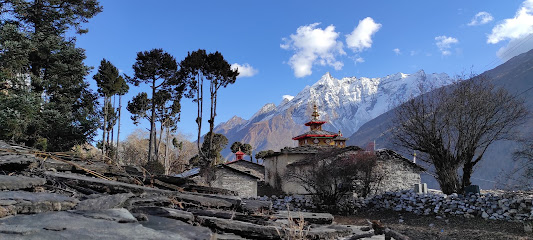
Pung Gyen Gompa
Discover the tranquil beauty and spiritual depth of Pung Gyen Gompa in the heart of the Himalayas, a must-visit for every traveler in Nepal.
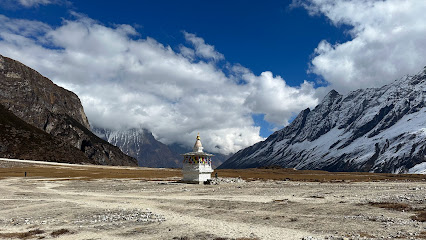
Larkya La Pass
Experience the breathtaking beauty of Larkya La Pass, a high-altitude trekking paradise in Nepal's Manaslu region, where adventure meets stunning Himalayan vistas.
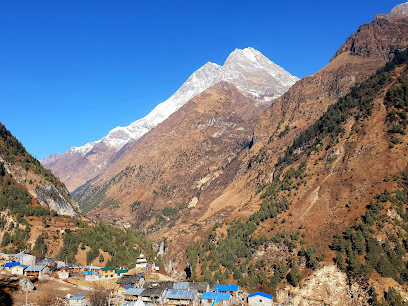
Larke pass
Explore the breathtaking Larke Pass in Nepal, a stunning trekking destination with majestic views and rich cultural experiences in the Himalayas.
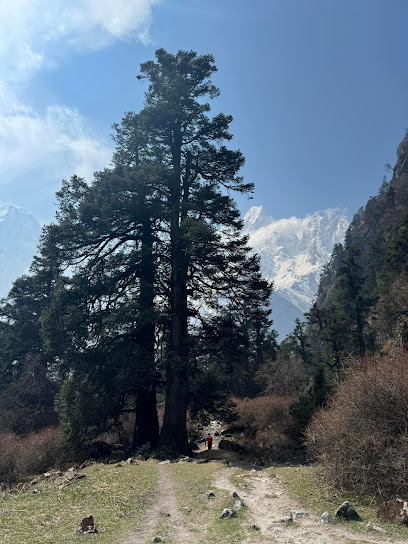
Birendra Lake ( वीरेन्द्र ताल )
Explore the breathtaking beauty of Birendra Lake in Samagaun, a serene haven for nature lovers and adventure seekers in Nepal.
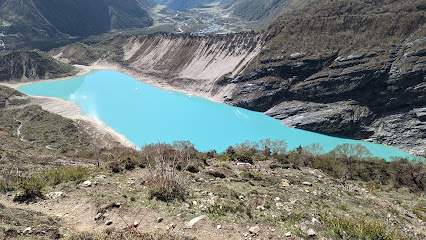
Ponkar Tal
Discover the breathtaking beauty of Ponkar Tal, a serene lake nestled in the Himalayas, perfect for nature lovers and adventure seekers.
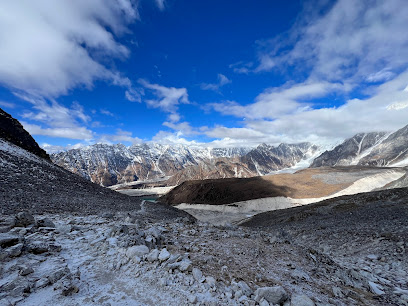
Paragliding Take Off Point
Discover the breathtaking beauty of Namarjung from above at the Paragliding Take Off Point, an unforgettable adventure for all thrill-seekers.
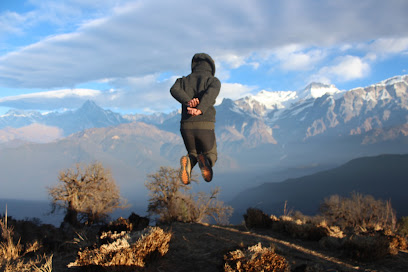
루블라 패스
Discover the stunning Rara Lake, Nepal's largest lake, surrounded by breathtaking landscapes and rich biodiversity in the heart of the Himalayas.

अमृत ताल
Discover the tranquility and spiritual essence of Amrit Tal, a hidden shrine in the heart of Samagaun, surrounded by majestic Himalayan beauty.

Lajyung Bhanjyang
Experience the breathtaking beauty and tranquility of Lajyung Bhanjyang, a hidden gem in the Himalayas, perfect for nature enthusiasts and adventure seekers.
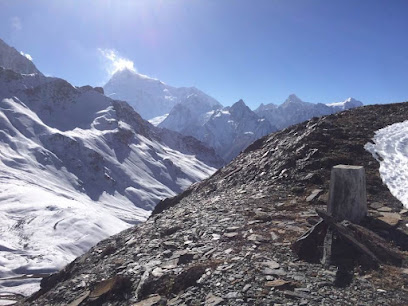
जनज्योती एग्रो फार्म
Explore the beauty of sustainable farming at Janjyoati Agro Farm, an authentic Nepali experience in the heart of Kalika's lush landscapes.
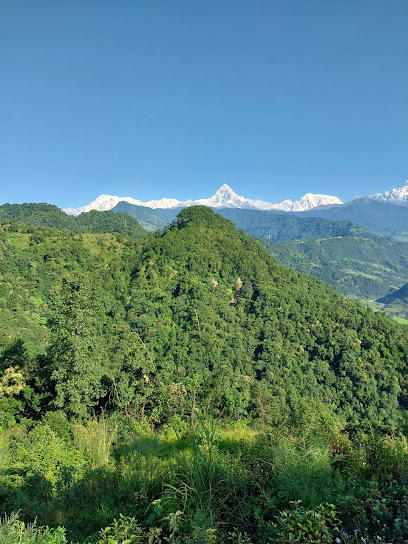
Essential places to dine
Open House Restro And Lounge bar
Experience exceptional dining at Open House Restro and Lounge Bar in Pokhara with stunning views and diverse cuisine.
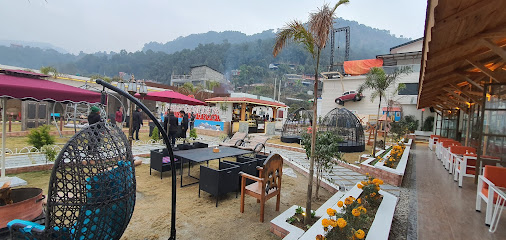
Moondance Restaurant & Bar
Discover Moondance Restaurant & Bar in Pokhara - where delicious cuisine meets stunning lakeside views for an unforgettable dining experience.
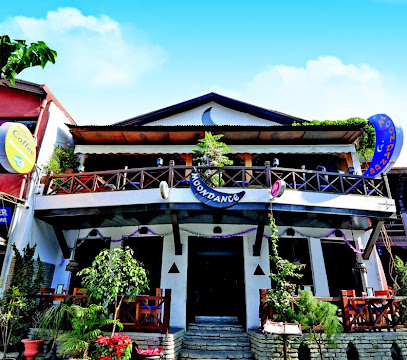
Roadhouse Cafe Pokhara
Discover Roadhouse Cafe in Pokhara - A Culinary Haven with Authentic Italian Pizzas and Stunning Mountain Views.
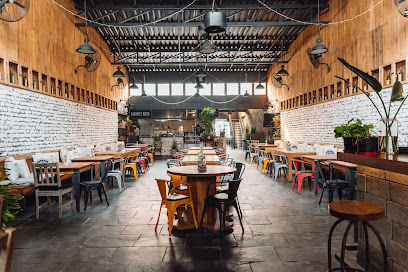
Utopia Garden & Snacks Bar
Experience exceptional dining at Utopia Garden & Snacks Bar in Pokhara – where local flavors meet serene garden ambiance.
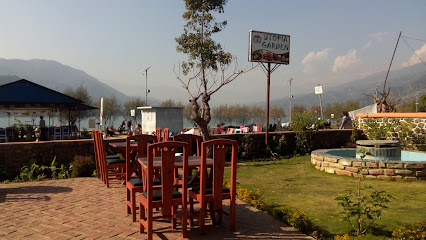
Mo2'S Delights Pokhara ( Now MoM's Café & Bar)
Experience authentic Nepalese cuisine at MoM's Café & Bar in Pokhara – renowned for its delicious momos and warm hospitality amidst stunning mountain views.
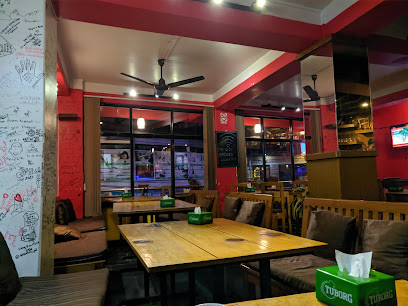
Green View Restaurant
Experience breathtaking views and authentic Nepalese cuisine at Green View Restaurant in Pokhara—a true culinary delight for every traveler.

New Turkish & Nepali Kitchen Kabap House
Experience a delightful fusion of authentic Turkish and Nepali cuisines at New Turkish & Nepali Kitchen Kabap House in picturesque Pokhara.
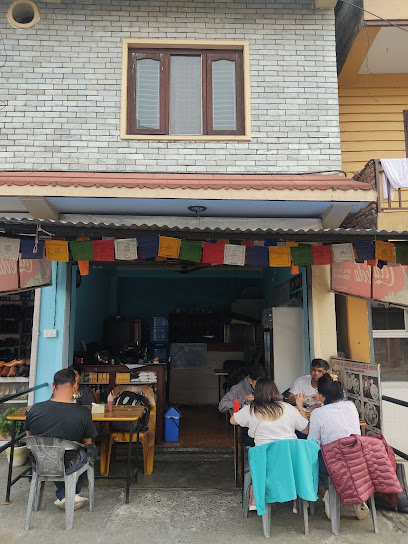
Sanu Lake On D Water
Experience exquisite dining and serene lakeside views at Sanu Lake On D Water, your perfect getaway in Lekhnath, Nepal.
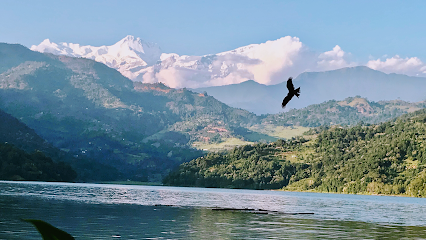
Hotel View Point Deurali & Restaurant
Experience stunning mountain views and delightful cuisine at Hotel View Point Deurali & Restaurant in Annapurna Base Camp.
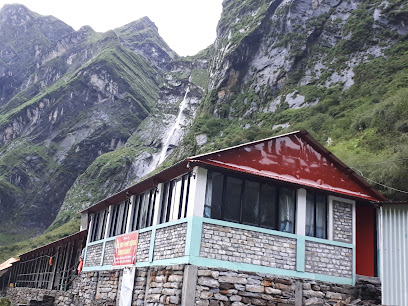
Restaurant Taste of Boudha
Experience authentic Nepali cuisine and international flavors at Taste of Boudha in Pokhara – where every meal is a journey through taste.
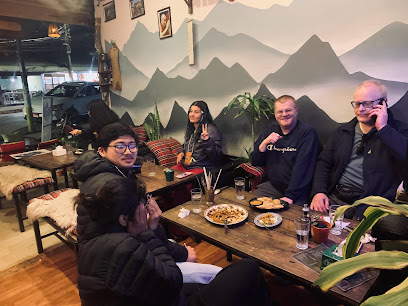
Alex's Restaurant
Experience authentic Nepali cuisine with stunning views at Alex's Restaurant in Lekhnath – a culinary gem for every traveler.
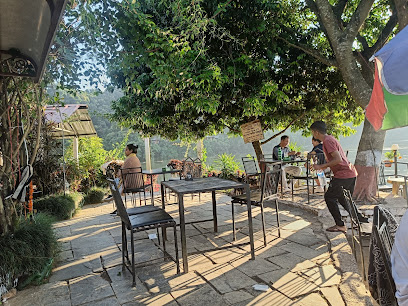
Naanglo Kitchen and Restaurant
Experience authentic Nepali cuisine at Naanglo Kitchen and Restaurant in Pokhara - where every meal is a celebration of flavors.
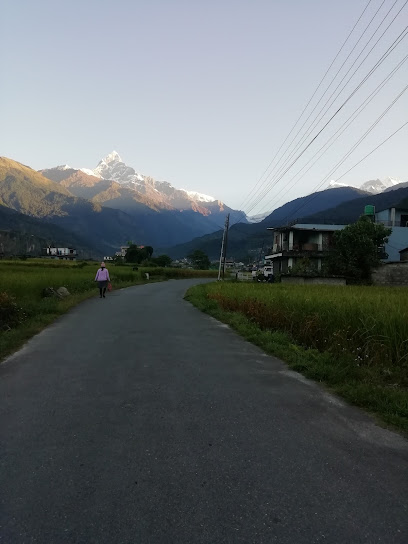
D Village Restaurant and Party Home
Experience authentic Nepali flavors at D Village Restaurant & Party Home in scenic Pokhara - where culinary delights meet warm hospitality.
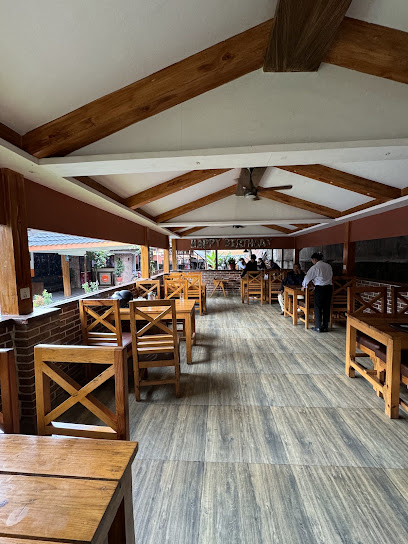
Thicheko aalu & dolphin restaurant
Experience authentic Nepalese flavors at Thicheko Aalu & Dolphin Restaurant in Pokhara – a culinary haven for food lovers and adventurers alike.
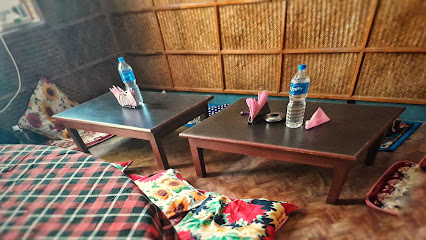
Sonlove Restaurant
Experience authentic Nepali cuisine at Sonlove Restaurant in Pokhara – where flavors meet tradition in a cozy setting.
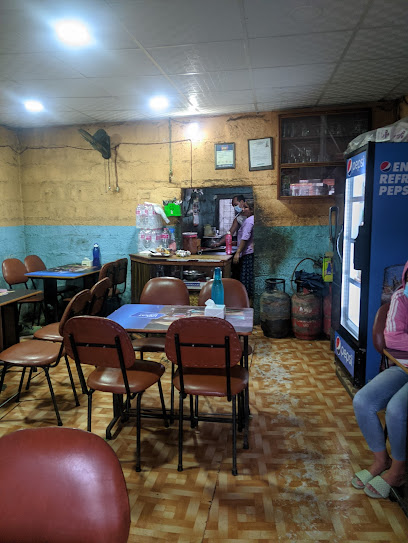
Markets, malls and hidden boutiques
Annapurna trekking shop
Explore the Annapurna region with confidence and gear up at Annapurna Trekking Shop – your one-stop destination for trekking essentials in Jagat.
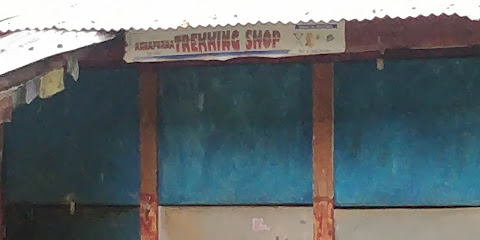
Nepal Kathmandu Pokhara
Explore Kathmandu's vibrant spiritual culture at the Buddhist supplies store, where authentic items and rich traditions await your discovery.
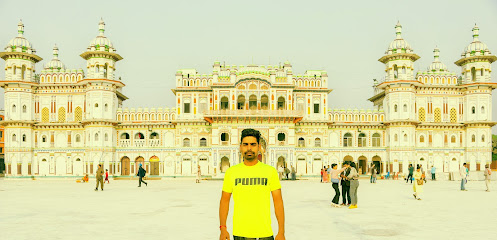
जितमन राइस् मिल
Explore the captivating craftsmanship of Nepal at जितमन राइस् मिल, your destination for unique home goods and memorable souvenirs.
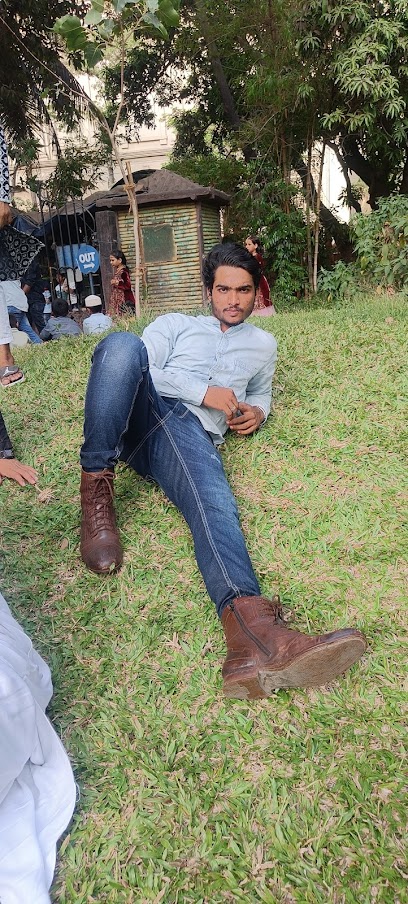
Khadka fancy stores
Discover the vibrant array of clothing and accessories at Khadka Fancy Stores, blending tradition and modern styles in Namarjung, Nepal.

Sylhet
Explore the flavors of Sylhet, where ice cream delights meet the picturesque landscapes of Nepal in a sweet travel experience.

Nabita fation collection
Explore the vibrant world of Nepali fashion at Nabita Fashion Collection, where tradition meets contemporary style in every garment.

Janvi General store
Experience authentic local shopping at Janvi General Store in Namarjung, where culture and community converge in a delightful shopping experience.

Sagarmatha dairy
Discover the authentic tastes of Nepal at Sagarmatha Dairy, offering a variety of fresh local dairy products in the heart of Namarjung.

उजीर चाैक
Discover the vibrant flavors of Namarjung at उजीर चाैक, your go-to grocery store for local delicacies and fresh produce.

Namwa
Explore Namwa, a delightful store in Namarjung, offering unique Nepali crafts and essentials for an authentic travel experience.

Triti Boutique
Explore unique handcrafted treasures and authentic souvenirs at Triti Boutique in Namarjung - a true reflection of local craftsmanship and culture.

Karuna Nibas
Discover the essence of local fashion at Karuna Nibas in Namarjung, where unique styles meet rich cultural heritage.

Sp stor
Discover Sp stor in Namarjung: a cozy book store with a rich selection of local and international literature, perfect for book lovers and casual readers alike.

Chhetrapati market
Discover unique women's fashion at Chhetrapati Market, a vibrant shopping destination in Namarjung showcasing local styles and craftsmanship.

Fashion point Fancy Dress, nepal
Discover the latest trends at Fashion Point Fancy Dress, your ultimate youth clothing destination in Nawal-Parasi, Nepal. Shop vibrant styles that reflect your personality.

Essential bars & hidden hideouts
Hotel Ganga Manaslu and Resturant
Experience authentic Nepali cuisine with breathtaking mountain views at Hotel Ganga Manaslu and Restaurant, a must-visit on your Manaslu Trek.
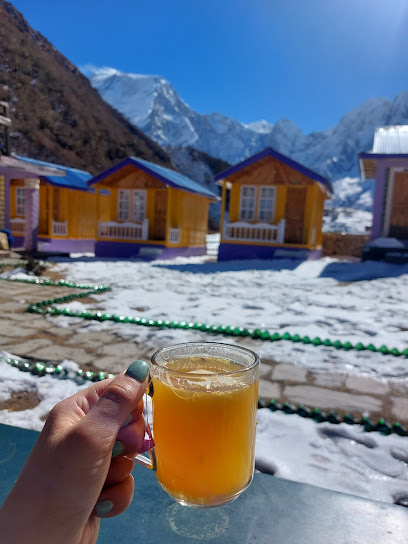
Lamahi Dang
Experience the lively atmosphere and eclectic drink options at Lamahi Dang, a top nightlife spot in Namarjung, Nepal.

Maanapathi Restaurant and Bar
Discover a delightful culinary experience at Maanapathi Restaurant and Bar, where local flavors meet a serene atmosphere in enchanting Pokhara.
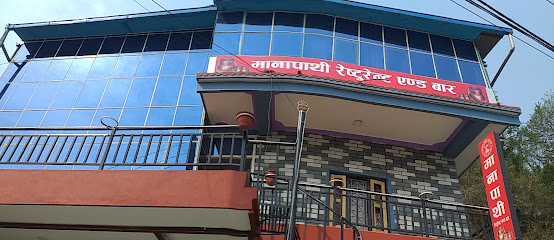
Valam
Discover the lively bar scene in Valam, where local spirits and welcoming ambiance create unforgettable nightlife experiences.
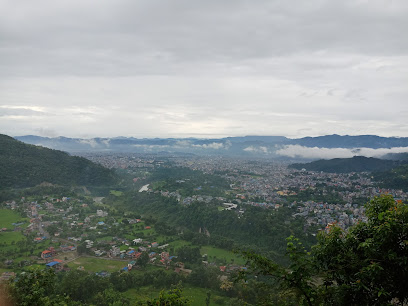
Mamta
Discover Mamta, a charming bar in Namarjung, where culture and relaxation blend perfectly with a variety of delightful drinks.

sss Trade suppliers
Experience the vibrant nightlife of Namarjung at sss Trade Suppliers, a top-rated bar known for its exceptional drinks and lively atmosphere.
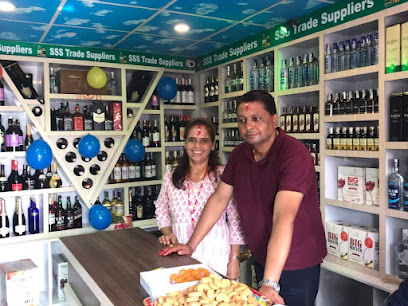
Bikram's madhira pasal
Discover the essence of fine wines at Bikram's Madhira Pasal in Lekhnath, where every sip tells a story of culture and taste.

Deepak's cottage
Discover the peaceful retreat of Deepak's Cottage in Lwang Ghalel, where local drinks and stunning views create a serene escape.

TT ministar
Discover the charm of Sardi Khola at TT ministar, a cozy bar offering local brews and a friendly atmosphere perfect for unwinding.

Man maiju chok
Discover the vibrant essence of Kathmandu at Man Maiju Chok, a cozy bar where local culture meets refreshing drinks in a welcoming atmosphere.

Nyingthop restaurant and snooker
Experience the lively atmosphere of Nyingthop Restaurant and Snooker, where delicious food meets fun snooker games in Namarjung, Nepal.

Manipur tol
Experience the vibrant nightlife at Manipur Tol, a charming bar in Namarjung, perfect for unwinding and enjoying great drinks.

aaa
Experience local culture and breathtaking views at the charming bar in Machhapuchhre Rural Municipality, a perfect retreat for every traveler.

Roka homestay
Experience the serene beauty of Lwang Ghalel at Roka Homestay, where local culture meets breathtaking views in a cozy bar setting.

Dhital
Discover Dhital Bar, a perfect blend of local culture and scenic views along Phokara Road, ideal for relaxation and socializing.
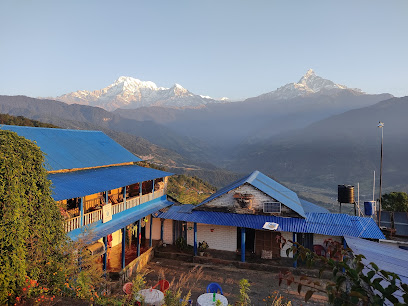
Local Phrases about Manaslu Circuit
-
- Helloनमस्ते
[namaste] - Goodbyeफेरी भेटौं
[feri bhetou] - Yesहो
[ho] - Noहोइन
[hoin] - Please/You're welcomeकृपया
[krupaya] - Thank youधन्यवाद
[dhanyabad] - Excuse me/Sorryमाफ गर्नुहोस्
[maaf garnuhos] - How are you?तपाईंलाई कस्तो छ?
[tapailai kasto cha?] - Fine. And you?राम्रो छ। तपाईंलाई?
[ramro cha. tapailai?] - Do you speak English?तपाईंले अंग्रेजी बोल्नुहुन्छ?
[tapainle angreji bolnuhunchha?] - I don't understandमलाई सम्झिन्छैन
[malai samjhinchain]
- Helloनमस्ते
-
- I'd like to see the menu, pleaseकृपया मेनु हेर्न चाहन्छु
[krupaya menu hern chahanchu] - I don't eat meatम भांसास खाइन
[ma bhaansaas khain] - Cheers!चियर्स!
[cheers!] - I would like to pay, pleaseकृपया भुक्तानी गर्न चाहन्छु
[krupaya bhuktani garn chahanchu]
- I'd like to see the menu, pleaseकृपया मेनु हेर्न चाहन्छु
-
- Help!मद्दत गर्नुहोस्!
[maddat garnuhos!] - Go away!टाढा जानुहोस्!
[tadha januhos!] - Call the Police!पुलिसलाई बोलाउनुहोस्!
[poliselai bolaunuhos!] - Call a doctor!डाक्टरलाई बोलाउनुहोस्!
[daktarlai bolaunuhos!] - I'm lostम कहिल्यै गुमाइएको छु
[ma kahilyai gumaieko chu] - I'm illम अस्वस्थ छु
[ma aswastha chu]
- Help!मद्दत गर्नुहोस्!
-
- I'd like to buy...म खरिद गर्न चाहन्छु...
[ma kharid garn chahanchu...] - I'm just lookingम सिर्जना गर्न आएको छु
[ma sirjana garn aeko chu] - How much is it?यो कति हो?
[yo kati ho?] - That's too expensiveयो धेरै महँगो छ
[yo dherai mahango cha] - Can you lower the price?के तपाईं मूल्य हाल्न सक्नुहुन्छ?
[ke tapain mulya haln saknuhunchha?]
- I'd like to buy...म खरिद गर्न चाहन्छु...
-
- What time is it?कति बज्यो?
[kati bajyo?] - It's one o'clockएक बज्यो
[ek bajyo] - Half past (10)दस बजे अघि
[das baje agi] - Morningबिहान
[bihan] - Afternoonदिउँसो
[diunso] - Eveningसाँझ
[sanh] - Yesterdayहिजो
[hijo] - Todayआज
[aaj] - Tomorrowभोलि
[bholi] - 1एक
[ek] - 2दुई
[dui] - 3तीन
[tin] - 4चार
[char] - 5पाँच
[paanch] - 6छ
[chha] - 7सात
[saat] - 8आठ
[aath] - 9नौ
[nau] - 10दश
[dash]
- What time is it?कति बज्यो?
-
- Where's a/the...?...... कहाँ छ?
[...... kaha chha?] - What's the address?ठेगाना के हो?
[thegana ke ho?] - Can you show me (on the map)?के तपाईंले मलाई देखाउन सक्नुहुन्छ?
[ke tapainle malai dekhaun saknuhunchha?] - When's the next (bus)?अर्को (बस) कहिले छ?
[arko (bas) kahile chha?] - A ticket (to ....)एक टिकट (....... लागि)
[ek ticket (....... lagi)]
- Where's a/the...?...... कहाँ छ?
History of Manaslu Circuit
-
The name 'Manaslu' is derived from the Sanskrit word 'Manasa,' which means 'soul' or 'spirit.' The local people believe that the mountain is a sacred dwelling of the gods. Revered by the indigenous Tibetan and Nepalese communities, the mountain has a spiritual significance that predates recorded history. It has long been a pilgrimage site, and ancient myths and legends surrounding the mountain have been passed down through generations.
-
The first recorded exploration of the Manaslu region was conducted by Japanese expeditions in the 1950s. These early explorers were not only mountaineers but also scholars who documented the geography, culture, and flora and fauna of the area. Their detailed maps and reports laid the groundwork for future expeditions and trekking routes. The Japanese presence in the region has been so significant that Manaslu is often referred to as the 'Japanese Mountain.'
-
In 1956, a Japanese team led by Toshio Imanishi and Gyalzen Norbu Sherpa successfully made the first ascent of Manaslu, reaching the summit on May 9th. This historic climb not only put Manaslu on the map for mountaineers but also brought international attention to the region. The success of this expedition inspired many subsequent climbs and established Manaslu as a significant peak in the mountaineering world.
-
The Manaslu Circuit Trek was officially opened to trekkers in 1991, following the Nepalese government's decision to promote eco-tourism in the region. The trek offers a more secluded and culturally immersive experience compared to the more commercialized routes like the Annapurna and Everest circuits. The trail passes through several remote villages, ancient monasteries, and diverse landscapes, making it a unique journey for trekkers.
-
The Tsum Valley, a hidden gem within the Manaslu region, was opened to trekkers in 2008. Known for its rich cultural heritage, the valley is home to Tibetan Buddhist communities that have preserved their ancient traditions and way of life. The valley boasts ancient monasteries such as Mu Gompa and Rachen Gompa, which are centers of spiritual learning and meditation. The Tsum Valley adds a profound cultural dimension to the Manaslu Circuit, offering trekkers a glimpse into a way of life that has remained unchanged for centuries.
-
The devastating earthquake that struck Nepal in April 2015 had a significant impact on the Manaslu region. Many villages and trekking routes were damaged or destroyed. However, the resilient local communities and international aid efforts have since worked tirelessly to rebuild the area. The Manaslu Circuit has been restored and remains a testament to the strength and perseverance of the people who call this region home.
-
In recent years, there has been a growing emphasis on conservation and sustainable tourism in the Manaslu region. The establishment of the Manaslu Conservation Area in 1998 has played a crucial role in preserving the natural environment and cultural heritage of the region. Trekking agencies and local communities are increasingly focusing on eco-friendly practices to ensure that the beauty and biodiversity of Manaslu can be enjoyed by future generations.
Manaslu Circuit Essentials
-
The Manaslu Circuit is located in the Gorkha District of Nepal. The nearest international airport is Tribhuvan International Airport in Kathmandu. From Kathmandu, the journey to the starting point of the trek, typically either Soti Khola or Arughat, involves a combination of road travel. Buses and jeeps are available from Kathmandu, and the journey usually takes around 6 to 8 hours depending on the road conditions.
-
Once you reach the starting point of the Manaslu Circuit, most of the transportation will be on foot as it is a trekking route. Porters and mules can be hired to carry your gear. Within Kathmandu, taxis, buses, and rickshaws are common modes of transportation. For the initial trip to the trek's starting point, you can hire a private jeep for a more comfortable journey or take a public bus for a budget-friendly option.
-
The official currency in Nepal is the Nepalese Rupee (NPR). Credit cards are accepted in major hotels, restaurants, and shops in Kathmandu, but it is advisable to carry cash, especially in rural and trekking areas. ATMs are available in Kathmandu, but it is wise to withdraw enough cash before heading to the Manaslu Circuit as ATMs are scarce along the trek.
-
The Manaslu Circuit is generally safe for tourists, but standard precautions should be taken. Avoid trekking alone and always stay on the designated paths. Be cautious of altitude sickness and acclimatize properly. There are no specific high-crime areas targeting tourists, but petty theft can occur, so keep an eye on your belongings in crowded places and during transit.
-
In case of emergency, dial 100 for police assistance. For medical emergencies, it is recommended to have travel insurance that covers helicopter evacuation and medical treatment. The nearest medical facilities are in Kathmandu. While trekking, it is important to carry a basic first-aid kit and be aware of the locations of teahouses and villages where you can seek help.
-
Fashion: Do dress modestly, especially when in villages and religious sites. Avoid revealing clothing. Religion: Do respect local customs and traditions, and always ask for permission before entering monasteries and religious sites. Public Transport: Do be patient and respectful on public transport. Avoid loud conversations and keep your belongings close. Greetings: Do greet locals with a 'Namaste' and a slight bow. Eating & Drinking: Do try local foods and be polite if offered food by locals. Don't waste food and always use your right hand for eating and giving.
-
To experience the Manaslu Circuit like a local, engage with the teahouse owners and local guides to learn about their culture and traditions. Visit local markets in villages along the trek to buy handicrafts and traditional items. Respect the environment by following the Leave No Trace principles and support local businesses by staying in locally-owned teahouses and purchasing locally-made products.
Trending Landmarks in Manaslu Circuit
-
Annapurna Conservation Area
-
Seti River Gorge
-
Chamere Gufa
-
Manaslu
-
Kahunkot Viewpoint
-
Manaslu Trekking Area
-
Mardi Himal Base Camp Trek
-
Pokhara Planetarium & Science Center (Mirror Maze House)
-
Pokhara Nepal
-
Manaslu Circuit Trekking
-
Larkya La Pass
-
Birendra Cave
-
Mu Gompa
-
Manaslu Circuit Trek in Nepal
-
Manaslu Circuit Trekking Route
Nearby Cities to Manaslu Circuit
-
Things To Do in Gorkha
-
Things To Do in Bandipur
-
Things To Do in Chitwan
-
Things To Do in Kathmandu
-
Things To Do in Patan
-
Things To Do in Bhaktapur
-
Things To Do in Nagarkot
-
Things To Do in Lumbini
-
Things To Do in Namche Bazaar
-
Things To Do in Patna
-
Things To Do in Varanasi
-
Things To Do in Lucknow
-
Things To Do in Darjeeling
-
Things To Do in Gangtok
-
Things To Do in Siliguri






